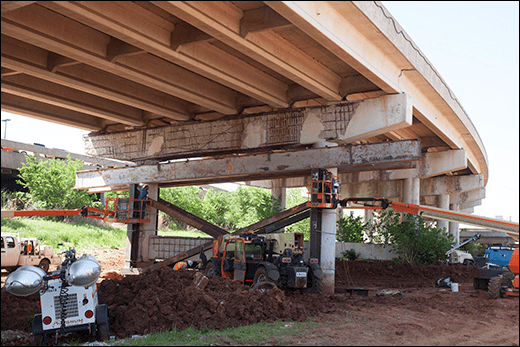A new report from the American Road & Transportation Builders Association said there are about 185 million daily vehicle crossings on 55,710 structurally deficient U.S. roadway bridges, of which about 1,900 are on the Interstate Highway System.
Bridges that are rated as structurally deficient are open to traffic if authorities consider them safe for travel, but need repair or replacement of at least some component such as the bridge deck surface.
ARTBA’s report, which is based on analysis of the U.S. Department of Transportation’s recently released 2016 National Bridge Inventory data, also said that state DOTs have identified 13,000 interstate bridges that need replacement, widening or major reconstruction. The association’s chief economist, Alison Premo Black, conducted the analysis.
“America’s highway network is woefully underperforming,” Black said in a press release. “It is outdated, overused, underfunded and in desperate need of modernization. State and local transportation departments haven’t been provided the resources to keep pace with the nation’s bridge needs.”
ARTBA said the average age of a structurally deficient bridge is 67 years old, compared with 39 years for non-deficient bridges. But the data indicated the list of deficient structures could soon lengthen, as ARTBA also said 41 percent of all U.S. bridges are over 40 years old “and have not had major reconstruction work.”
The ARTBA study broke the information down into lists of the “top 250” deficient bridges in terms of daily traffic volume, the top 10 by state and state-by-state rankings. It also provided interactive maps through which viewers can download bridge reports for specific states or for individual congressional districts.
That allowed news agencies across the country to generate numerous stories targeted on bridges in their own states or local areas that made the lists of deficient structures.
ARTBA said the states with the highest number of structurally deficient bridges were Iowa, Pennsylvania, Oklahoma, Missouri, Nebraska, Illinois, Kansas, Mississippi, Ohio and New York. The fewest such structures were in the District of Columbia, Nevada, Delaware, Hawaii and Utah.
Eight states had at least 15 percent of their bridges categorized as structurally deficient, ARTBA said. They were Rhode Island, Iowa, Pennsylvania, South Dakota, West Virginia, Nebraska, North Dakota and Oklahoma.

